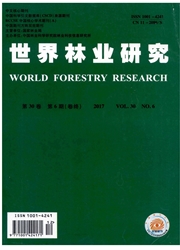

 中文摘要:
中文摘要:
叶片光合能力是植物光合作用强弱的重要反映,直接决定着植物生产力的高低,受叶片外界环境条件和内部因素的影响。叶龄作为叶片连续生命进程的重要指标,可在一定程度上反映展叶期、成熟期和凋落期内叶片生长发育过程及其动态。研究表明,随着叶龄变化,净光合速率、最大净光合速率、CO2饱和时最大净光合速率、最大Rubisco催化反应速率等叶片光合能力指标均会发生不同程度及趋势的变化,这种变化主要受叶片生理指标(结构性指标、非结构性指标、营养元素等)影响。文中总结了树木叶片光合能力随叶龄变化的趋势,分析了光合能力随叶龄变化的生理机制,据此对叶片光合能力随叶龄变化的相关研究进行了展望。
 英文摘要:
英文摘要:
Photosynthetic capacity of leaves is the important evaluating factor to the strength of photosynthesis, which directly determines the productiveness of plants, and it is often affected by environmental conditions and intrinsic factors of leaves. As one of the important indicator, leaf describe continuous life phases of leaves, and reflect to some extent the leave growth process and external age can trend at leaf expansion, mature and falling periods. In fact, many researchers have concluded that, photosynthetic capacity indicators, such as net photosynthetic rate, maximum net photosynthetic rate, maximum net photosynthetic rate at C02 saturation, maximum Rubisco catalytic reaction rate, etc. could vary to different extents with the changes of leaf age. Those changes were brought from the physiological indexes inside leaves (such as structural indicators, non-structural indicators, nutrient elements etc. ). This paper summarized the changing trend of photosynthetic capacities of different trees with the change in leaf age, analyzed the physiological mechanisms of variations of leaf photosynthetic capacity with leaf age, and related research on the leaf photosynthetic capacity' s variations with leaf age in the future.
 同期刊论文项目
同期刊论文项目
 同项目期刊论文
同项目期刊论文
 期刊信息
期刊信息
